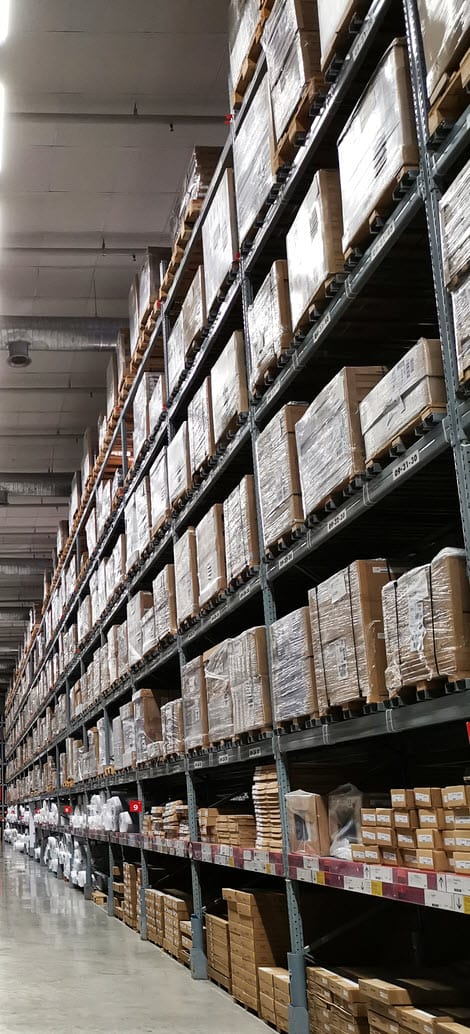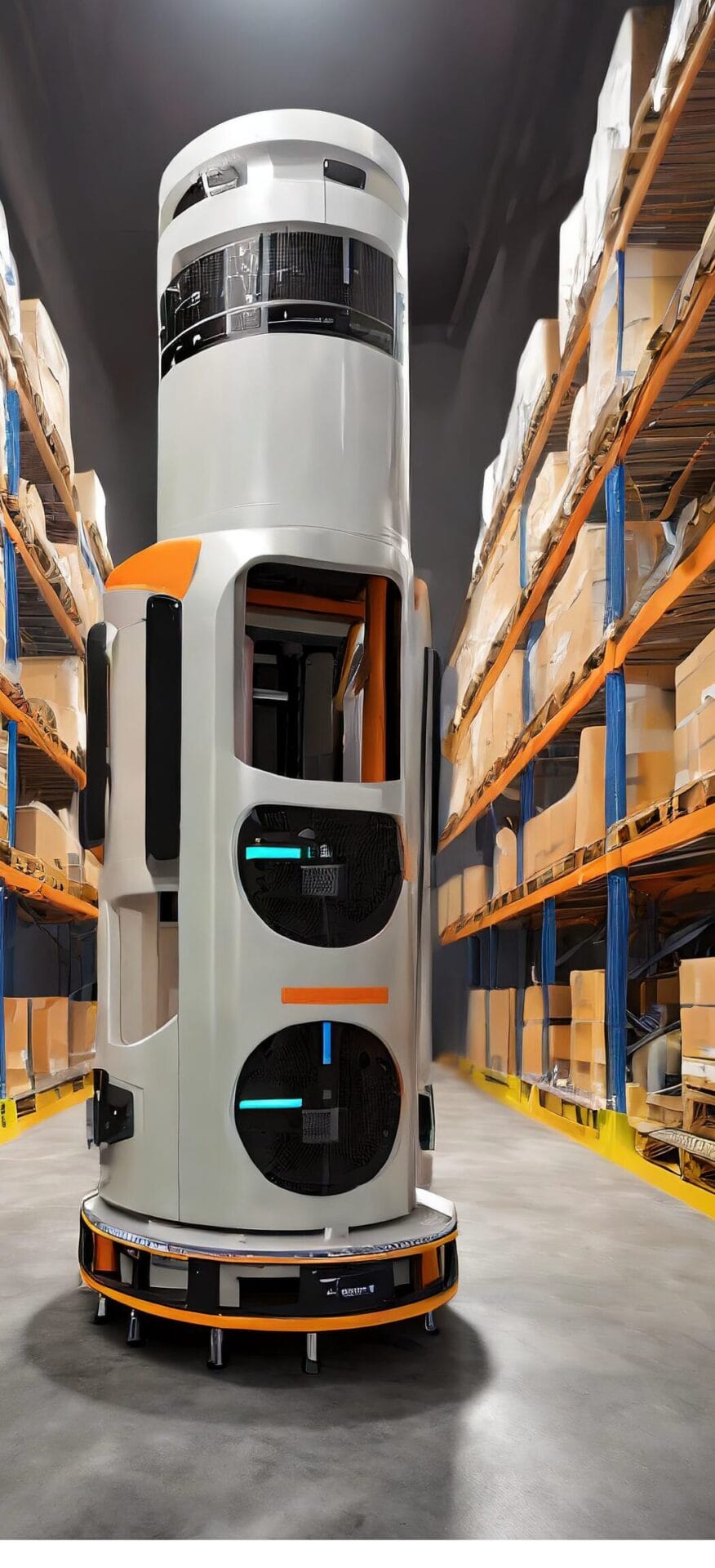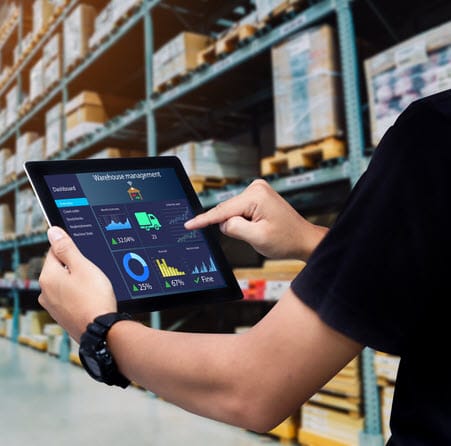Warehouse Package Scanning
Fast scanning and validation of incoming and outgoing packages with ParcelSCAN
Your browser is out of date, for the best web viewing experience visit Browse Happy to upgrade your browser today.
Implementing high bay storage allows warehouses to make full use of the vertical space available in their facilities. By stacking inventory in >30’ high bays, warehouses significantly increase their bin utilization rates without requiring more floor space. However, cycle counting inventory stored at these heights creates new challenges like how to best conduct high bay inventory scanning.
For most warehouses the practice of high bay scanning includes lifting workers armed with handheld scanners in a cherry picker. These employees will scan codes as they are raised from the floor to the storage high bays. There are several drawbacks to this approach including:

Learning how to successfully scan high bay inventory is crucial to a warehouse’s ability to stay competitive.

The need to improve the process of high baby inventory scanning has been the focus of several novel technological solutions including warehouse drones and automated mobile robots (AMRs). While each of these approaches seem leading edge and compelling, they are fraught with challenges:
Additionally, most AMR and drone solution providers will not integrate into existing warehouse management systems and instead require warehouses to use standalone applications and tools to report on their cycle counting results. Warehouse drones and AMRs used for high bay scanning are more bleeding edge than leading edge, resulting in many warehouses becoming disenchanted with cycle count automation.
Additionally, most AMR and drone solution providers will not integrate into existing warehouse management systems and instead require warehouses to use standalone applications and tools to report on their cycle counting results. Warehouse drones and AMRs used for high bay scanning are more bleeding edge than leading edge, resulting in many warehouses becoming disenchanted with cycle count automation.

Like the other solution providers, Vimaan also provides an application (ViewDECK Inventory Visualization) that allows warehouses to review inventory scans, but we also recognize the value of your WMS. Vimaan has integrated with all the major WMS platforms, along with many in-house built platforms.
High bay storage systems can lead to lower operational costs by minimizing the need for additional building construction or leasing extra warehouse space. This efficiency helps in managing storage costs and improving overall warehouse utilization while still accommodating growing inventory needs. But these extreme heights should not limit the visibility of your inventory. Leading 3PLs, Retailers and Manufacturers have been benefiting from the versatility of StorTRACK for not only scanning inventory in high bays, but also for capturing goods on all their other shelves.

Q: Can I reduce cycle count headcount with drones?:
A: Yes and No. Warehouses could reduce headcount due to the automated scanning of their high bay racks. But warehouse drone providers will tell you that because of the short battery lives, warehouses need to purchase multiple drones to support longer cycle count missions. Some drone providers claim to scan 9,000 locations in an hour; what they are not disclosing is that warehouses need at least 3 drones flying back-to-back missions to support that volume of data capture. With drones, you might be able to eliminate 1-2 existing heads, but you will need to hire specialized pilots to fly and juggle multiple drones at one time. (see Warehouse Drone FAQ)
Q: What are the risks involved with AMRs in the warehouse?
A: From a safety standpoint, the risks are low to moderate. These giant structures move at fairly slow speeds, so they pose little risk to employee safety, but your workers will need to stay out of their paths. Other risks to be considered include damages and breakdowns of these monoliths. There are many moving parts to these robots and with moving parts comes mechanical wear and tear. These bots are not industrial strength like forklifts, they are highly sophisticated and fragile machines. If a single part breaks, the AMR is rendered useless until the service provider can fly out to your warehouse. The message these giant bots tell your existing employees is that they are replaceable with very expensive technology. One other risk to consider is your ability to achieve an ROI. AMRs are the costliest option for high bay cycle counting, the upfront and annual subscription costs make it nearly impossible to achieve an ROI in a reasonable time period.
Q: How fast will StorTRACK cycle count my inventory?
A: StorTRACK scans as fast as your MHE can lift and lower its forks. For most warehouses StorTRACK scans from the floor to high bays in less than 20 seconds. Typical StorTRACK performance includes scanning a 300’ long/30’ high aisle in about 35 minutes. Additionally most warehouses that use StorTRACK will experience an ROI in 6-8 months (or less).
Learn more about high bay inventory scanning, contact the cycle counting experts at Vimaan.
Fast scanning and validation of incoming and outgoing packages with ParcelSCAN
Warehouses are capturing all 4 sides of pallets faster than ever before with PalletSCAN 360.
Distributors reliably scan all outgoing cases in seconds ensuring customer orders are correct before shipping